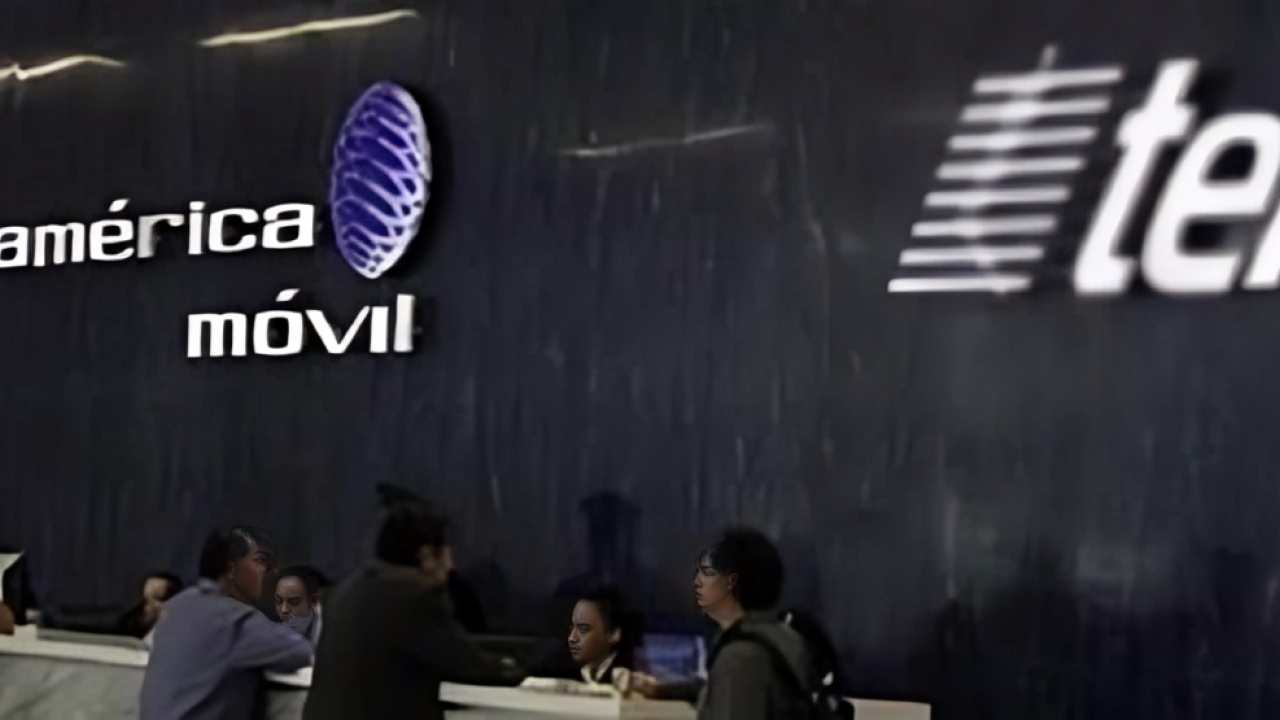
The Mexican multinational is re-focusing on Brazil after 20 years following regulatory changes in Mexico that complicated its local expansion in different businesses.
América Móvil will invest up to 40,000 million reais between 2024 and 2029 in its Brazilian unit, Claro, a company that for América Móvil represents 114 million mobile and fixed subscriptions, between voice, video and data, and assets between spectrum frequencies, thousands kilometers of fiber optic-based network and a fleet of satellites that covers the entire American continent.
The announced investment is equivalent to US$ 7.7 billion and would be broken down into US$ 1.54 billion per year to develop infrastructure for Claro Brasil. That level of investment is almost four times the money that América Móvil has been investing annually in Claro Argentina.
América Móvil's plans for Brazil recognize progress in that country. The Brazilian economy would grow 2.4% in 2024 and 2.8% in 2025. But more important for this type of companies, the regulator, Anatel, and the federal government are working to, for example, offer spectrum frequencies for the industry at international prices. This does not take place in Mexico despite the efforts by the regulator, the Federal Telecommunications Institute (IFT).
América Móvil must also invest in Brazil given its competitors activities. For example, Telefónica invested US$ 1. 97 billion in its Vivo brand in 2023 alone, since Brazil is the most relevant business for Telefónica after Spain. TIM, another competitor, is considering a shareholder's proposal to the parent company, Telecom Italia, to sell their Brazilian unit.
Now, back to Brazil, América Móvil has managed to increase the its Brazilian business unit's income by more than US$1 billion over the last five years.
The local media Tele Síntesi and Teletime reported statements by executives of the Mexican group, after a visit that businessman Carlos Slim Helú made to President Luiz Inácio Lula da Silva.
“We continue with plans to make important investments in telecommunications in the country, with ambitious programs,” said Slim, TeleSintesi reported. “Brazil is today a slightly larger market for us than Mexico, because there, due to a special situation, there is no convergence,” Slim added, according to Teletime.
Brazil is not yet the largest business for the Slim family. Mexico, corporate headquarters of their holdings, still maintains that position. The difference is almost two to one: while Brazil generated about US$2.27 billion during the first quarter of 2024, América Móvil deliverd almost US$4.9 billion from Mexico.
However, Brazil is the unit that promises the best returns for the company in the future. For example, in five years, from January 2020 to January 2024, América Móvil's Brazilian business expanded by 19.78% in revenue terms, compared to 14.77% for the Mexican business. Claro Brasil's mobile users increased by 49.16%, compared to 8.78% for those of Telcel. Only in the fixed-lines segment Brazil's business fall faster than in Mexico since Embratel, also owned by Claro, has lost 29.34% of its fixed accesses, while Telmex lost 2% of their clients.
In Mexico, América Móvil is about to reach its maximum market share, although its consumer level is almost four times that of AT&T, the closest competitor. The company ended the first quarter of the year with 83.99 million mobile customers, 1.2% more than a year earlier. Therefore, the business for Telcel is not about gaining more customers by volume, but by value, which is why its postpaid business grew by 2.5% in the quarter and reached the mark of 15.10 million of those users.
Mexico is no longer growing as much for América Móvil, despite the fact that average consumption per user or ARPU has expanded by 14.28% for Telcel in five years, when in Brazil the consumption of Claro users has been 4%.
Brazil is a jewel for América Móvil due to its market volume, as is Telekom Austria due to its ARPU size. Two situations that are not seen in most of Latin America for this telecommunications group.
América Móvil is closer to losing than gaining success with Liberty Latin America in Claro-VTR's adventure in Chile, which continues to lose customers there. In Uruguay and Paraguay, the spectrum resulted in impacts on the company's profitability at the local level. In Colombia, Claro battles against Tigo and Movistar. Only in Guatemala and Peru, América Móvil continues to see better growth opportunities, Andrea Catalano of TeleSemana reports.
But in Mexico, América Móvil is expecting new regulatory policy from IFT that may force Telcel to share more of its infrastructure beyond access to national roaming. Telcel's competition expects more infrastructure sharing via the multi-operator model, better known in the industry as the “MOCN” model.
América Móvil evaluates larger investments in Brazil also because in Mexico, Telmex is banned to offer video services. This, regardless of a merger between Televisa's Izzi-Sky and Megacable, which could somehow translate into video access for Telmex.
“We have ambitious investment programs, especially in 5G. In the last five years we have invested US$ 10.6 billion, and in the next four or five years we are talking about around US$ 7.7 billion, especially in 5G and fiber networks, which needs to be broader,” said América Móvil about its plans for Brazil, where it holds a third of the telecommunications services behind TIM and Vivo.









